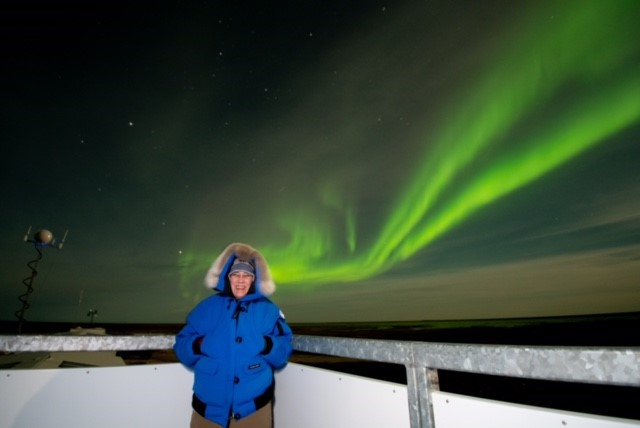Polar Bear Conservation in the Polar Bear Capital of the World
As we celebrate International Polar Bear Day, I think back to last fall when I had the opportunity to travel to Churchill in Manitoba, Canada as part of an educational opportunity organized Polar Bears International with learning objectives and content from the National Network for Ocean and Climate Change Interpretation (NNOCCI). Our learning began with spring and summer online learning modules that culminated in a fall field experience in Churchill, the “Polar Bear Capital of the World.” Churchill is on the Southwestern shore of Hudson Bay, and in October and November, polar bears are traveling through as part of their yearly migration. They are on the hunt for sea ice and can be seen passing through Churchill where it forms first on the Bay. Polar bears depend on sea ice to take them out to sea to hunt for seals, breed, and travel. When we fuel our energy needs by burning fossil fuels, such as coal, oil, and gas, we release carbon dioxide gas (CO2) into the atmosphere in greater quantities than is found naturally. This additional CO2 forms a heat-trapping blanket-like layer around our earth, increasing average global temperatures and causing our climate system to change. As a result, the sea ice is taking longer to form in the fall and breaking up earlier in the spring. This means that polar bears spend more time on land, where bears and humans can come into contact more often. Mitigating these human-bear interactions is important to Churchill residents, and researchers there have pioneered initiatives such as the year-round Polar Bear Alert Program, a 24-hour hotline to report bear sightings, a polar bear holding facility where bears who come into town are temporarily (but humanely) held before being relocated, and a radar-based polar bear detection system dubbed “Bear-dar.”
We got to see some of this mitigation infrastructure firsthand before spending the remainder of our time on the tundra aboard the Tundra Buggy Lodge with Frontiers North Adventures. Onboard, we learned about several research projects going on in the area and looked for polar bears and other wildlife. The landscape there is unlike anything I’ve ever seen. It feels flat and rocky and barren, but the reality is that it is full of life, from tiny mosses, lichens, and bushes to foxes, snowy owls, and polar bears. We saw a fair amount of wildlife and were lucky enough to see several polar bears. One even appeared at the Lodge just after breakfast and wandered back and forth sniffing with interest before going on his way. It was a good reminder of the keen sense of smell polar bears possess and how they can easily be attracted to alternative food sources, one of the leading causes of human-polar bear conflict.
Historically, the Churchill community has focused on removing food sources that attract bears, educating people about bear safety, and keeping people and bears apart. As with any coexistence between humans and wild animals, safety can never be 100% guaranteed. A polar bear-safe community, however, can make an area significantly safer for both people and bears. On the ground in Churchill, this means fewer bears in town and fewer bears that must be secured or relocated. It was inspiring to see how many different groups work to make Churchill a safe place for everyone—residents, tourists, and polar bears. Living in Cincinnati, it is easy to feel disconnected from the challenges facing polar bears in the Arctic. However, there is something that we all can do, no matter where we live, to help polar bears. By reducing our reliance on fossil fuels and curbing climate change impacts, we can protect polar bears and their sea ice habitat.

